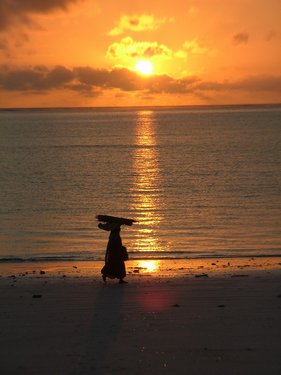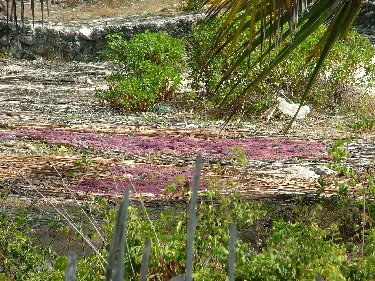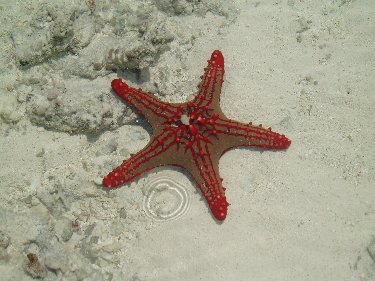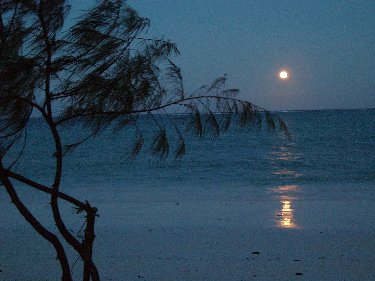|
|
WhereAreJanetandRick Zanzibar Island |
|
The Indian Ocean
Ahhh! Beach
After the hustle and bustle of busy Stone Town, we headed to the east coast of Zanzibar for some Rest and Relaxation. We went east from Stone Town for about 1.5 hours to the sleepy town of Paje and then hooked north to the even sleepier Bwejuu. We met a traveller in Stone Town who had referred us to the Sun and Sea View - 5 bungalows, each with 2 bright and spacious rooms. Ours,
of course, faced the Indian Ocean and it was a mere 20 second walk to the beach. Now this was really unbelievable - we almost literally had the whole beach to ourselves. There were 2 types of people on the beach - tourists (about 40!!! over the 6 km that we walked up and down) and local people. There were probably 75 locals and virtually all of them made a living by fishing and farming seaweed - more on that later.
Sunrise Over the Indian Ocean
On our first morning, we were awoken by the sun rising between our feet. Our bed faced east and the bright sun got us up for an amazing sunrise.
Farming the Sea
The local people are pitifully poor. The men fish (primarily King fish and Octopus) and the women farm both the land and the sea. At low tide, the sea recedes over a kilometer and all take to the sea. The men in search of fish, and the women (and children when not in school) to their seaweed plots.
A seaweed plot consists of about 10 rows of seaweed. First, sticks are cut and soaked in the sea. Then, they are driven into the sea bottom and a line is strung between 2 sticks to make each row. Then, a series of small seaweed plants are tied to each string. In 3 days, each seaweed plant is big enough to harvest. Once harvested, the seaweed is placed in large bags each weighing about 20 kilos. The women then hoist the bags on their heads and carry them to shore for drying.
Seaweed, fish and coconuts
Once on shore, the seaweed is spread out or hung out to sun/air dry. The dry vegetable is then sold - for 80 Tanzanian shillings (0.12 USD)/ kilo!!! A truck with a scale collects it periodically and it is sold primarily to Japan. Not much of a living!
Other crops include fresh fruit and vegetables - they are sold to local hotels and the Stone Town market. Until you've eaten here, you just haven't tasted fresh! The fresh fish are also sold locally. When the octopus are brought to shore, they are tenderized by whiping with a stick! Coconuts palms line the beach. The local 'grandfather' takes a morning walk to decide which coconuts are ripe. He then steps into a rope with 2 loops tied on either end of it, climbs the palms with the rope that straddles the trunk, takes down the ripe fruit (so that it doesn't fall on unsuspecting guests) and sells it locally. The milk and meat end up in dinner and the stringy husks are thrashed into fibres and buried in the sea. After a couple of days, the strengthened 'string' is manually rolled into rope that's used to make very comfortable beach chairs/recliners and building decorations. Nothing is wasted.
Wading at low tide
When the tide is low and the local farmers go out to sea, so did we. We observed the farming activities and admired the life in the low tide - growing seaweed, sea urchins, colorful starfish, coral, clown fish, sandy unidentified bottom dwellers, to name a few.
Full moon over Zanzibar
We were also treated to the full moon rising over the Ocean. The picture says it all.
| ||||||||||||||||||||||





